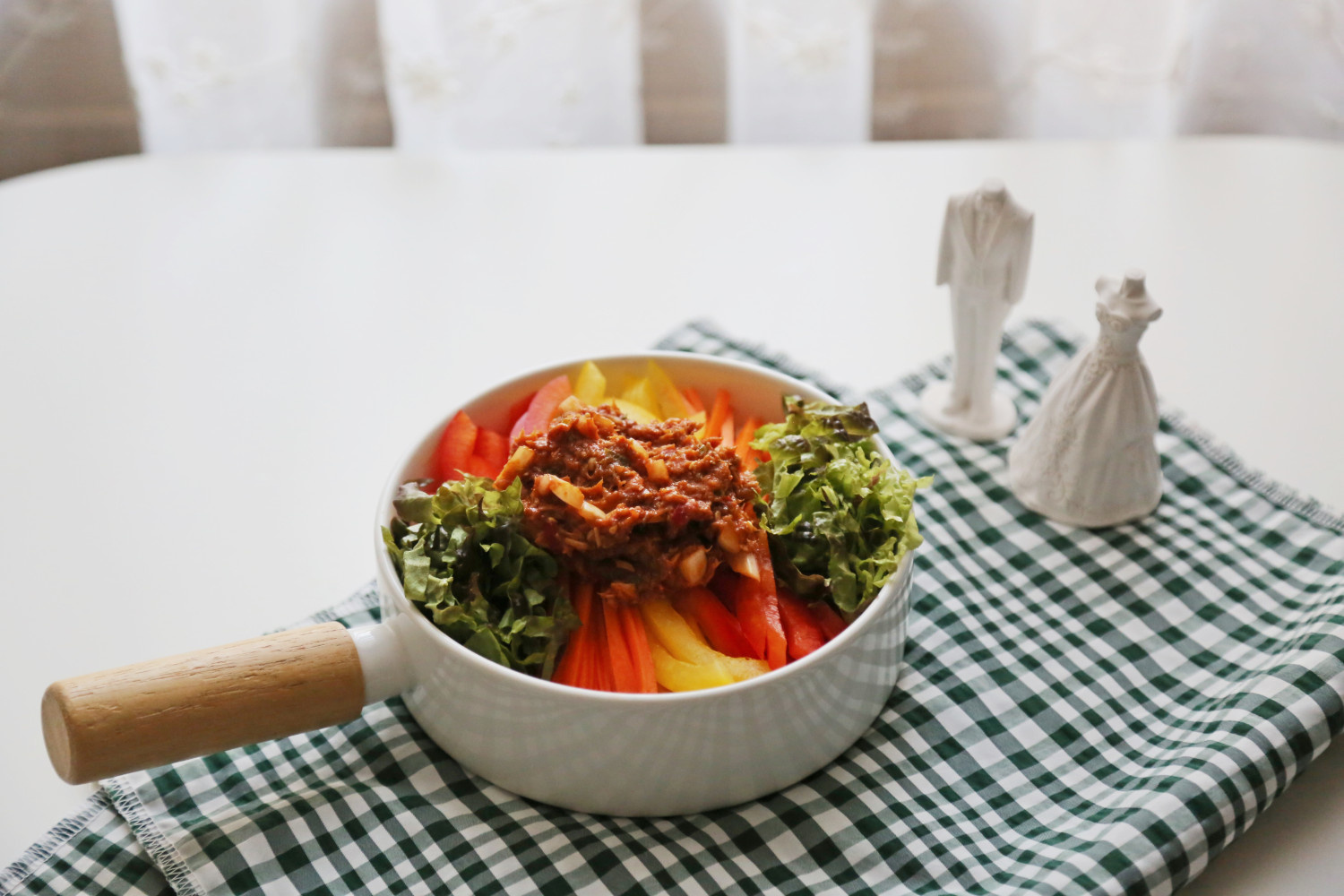Hearty and Delicious Tuna Ssamjang Bibimbap
Make a Flavorful Tuna Ssamjang Bibimbap with Various Vegetables, Easily Using Canned Tuna

Enjoy a delightful bibimbap experience using just a can of tuna from your pantry! When mixed with fresh vegetables and rice, this savory tuna ssamjang bibimbap is perfect for a satisfying meal or a special occasion. The taste of bibimbap truly depends on the sauce, and today, we’ll introduce a recipe for a bibimbap using tuna that adds an extra layer of umami. Get ready to create a dish that’s both healthy and incredibly flavorful!
Bibimbap Ingredients- 135g can of tuna, drained
- 2 Korean green chilies (cheongyang peppers)
- 1 red chili pepper
- 1/4 onion
- 2 lettuce leaves
- A small amount of red bell pepper
- A small amount of yellow bell pepper
- A small amount of carrot
- 1 bowl of warm rice
Special Tuna Ssamjang Sauce- 3 Tbsp Doenjang (Korean soybean paste)
- 1.5 Tbsp Gochujang (Korean chili paste)
- 1 Tbsp minced garlic
- 1.5 Tbsp sesame oil
- 1 Tbsp toasted sesame seeds
- 3 Tbsp Doenjang (Korean soybean paste)
- 1.5 Tbsp Gochujang (Korean chili paste)
- 1 Tbsp minced garlic
- 1.5 Tbsp sesame oil
- 1 Tbsp toasted sesame seeds
Cooking Instructions
Step 1
First, drain the oil completely from the canned tuna using a sieve. It’s important to drain it thoroughly, as any remaining oil can make the bibimbap taste greasy.

Step 2
Finely mince the 2 Korean green chilies, 1 red chili pepper, and 1/4 onion. Removing the seeds from the chilies can help control their spiciness. Finely chopped vegetables will blend better into the ssamjang sauce and improve the texture.

Step 3
In a large bowl, combine all the ingredients for the ssamjang sauce: 3 Tbsp doenjang, 1.5 Tbsp gochujang, 1 Tbsp minced garlic, 1.5 Tbsp sesame oil, and 1 Tbsp toasted sesame seeds. Mix well with a spoon or whisk until smooth and there are no lumps. Feel free to adjust the ratio of doenjang to gochujang according to your preference.

Step 4
Add the drained tuna, finely minced green chilies, red chili pepper, and onion to the well-mixed ssamjang sauce. When adding the tuna, lightly break up any large chunks with your spoon to help it blend evenly with the sauce.

Step 5
Using a spatula or spoon, gently mix all the ingredients together so they don’t clump. Ensure the tuna and vegetables are evenly coated with the ssamjang sauce to create a delicious and well-balanced flavor.

Step 6
Wash the lettuce leaves, carrot, red bell pepper, and yellow bell pepper thoroughly, then pat them dry. Thinly julienne them into similar lengths. Slicing the vegetables as thinly as possible will make them easier to mix into the bibimbap and enhance the visual appeal.

Step 7
Place 1 bowl of warm rice in a large serving bowl. Arrange the prepared vegetables attractively and evenly over the rice, perhaps by color. Colorful vegetables make the bibimbap look much more appetizing.

Step 8
Finally, spoon 2-3 tablespoons of the delicious tuna ssamjang sauce over the rice. You can adjust the amount to your liking. Now, mix everything together with chopsticks or a spoon and enjoy your flavorful bibimbap!




